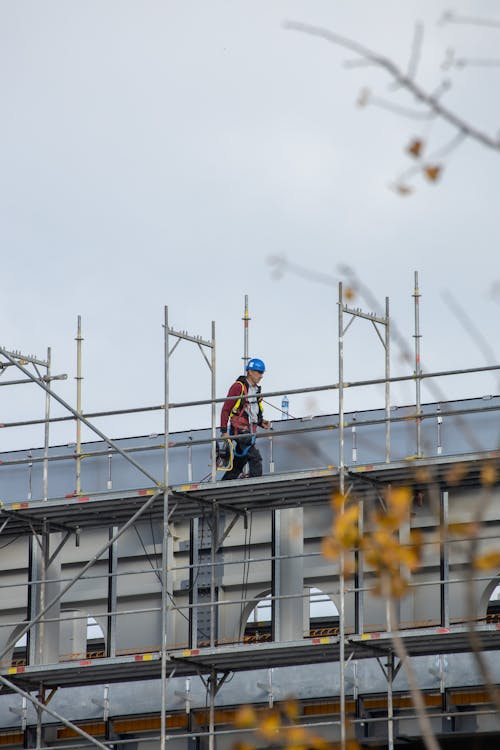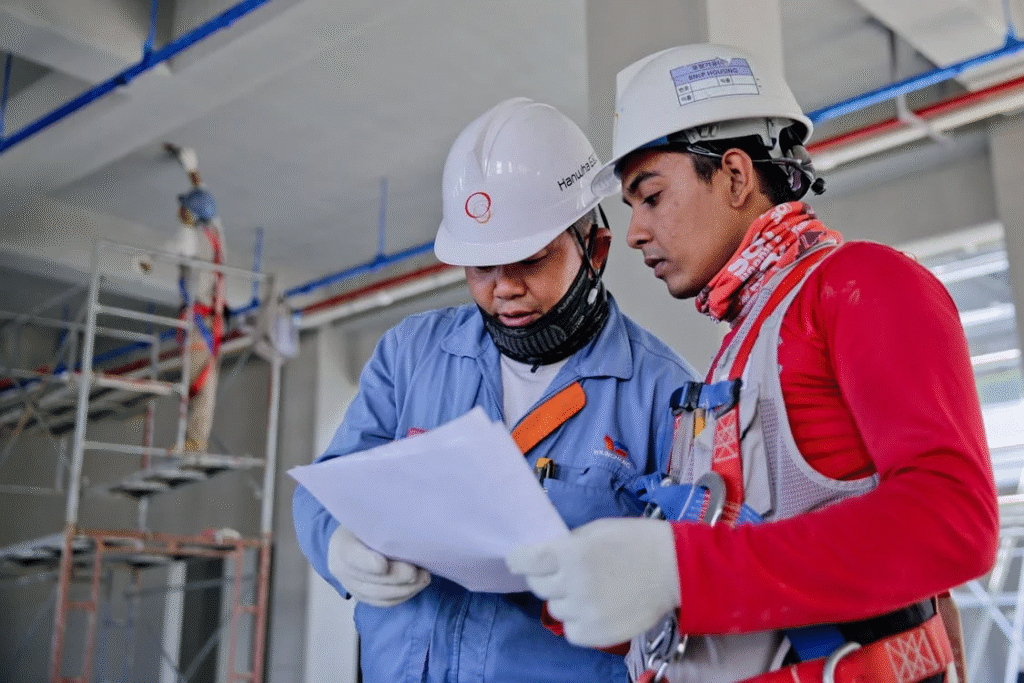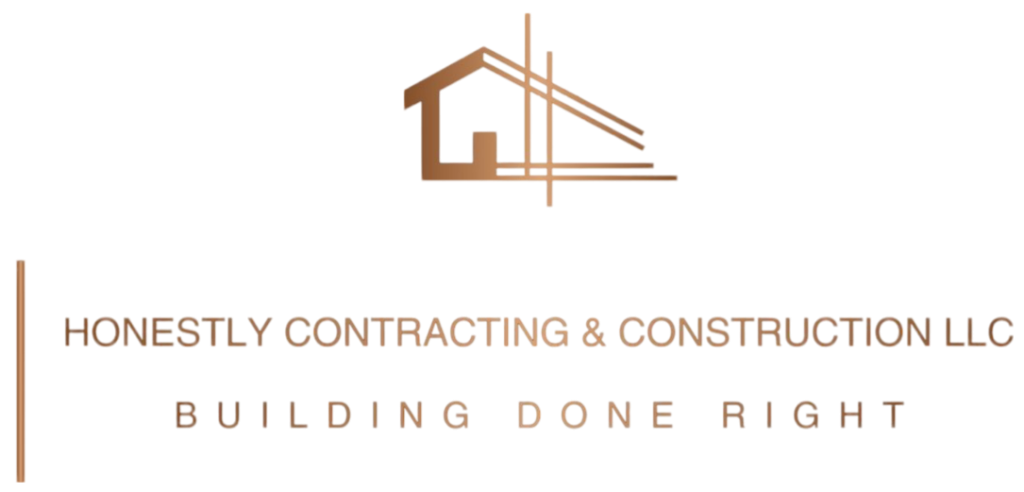Have you ever wondered what the most common cause of injuries on construction sites is? According to OSHA, one in five workplace deaths occurs in construction, with falls, struck-by incidents, and electrocutions making up the majority of accidents. These aren’t just statistics — they represent real people, real families, and real risks. That’s why construction safety standards are not just rules on paper; they are life-saving measures.
At Honestly Contracting & Construction, we know that a safe job site is the foundation of every successful build. Our commitment to quality construction services means following and exceeding safety requirements to protect every worker and keep every project on track.
In this guide, we’re breaking down essential construction safety standards, from personal protective equipment (PPE) to fall prevention and site-specific safety plans. You’ll learn how to create a safer environment and prevent accidents before they happen.
Why Construction Safety Standards Matter
Construction sites are inherently hazardous — heavy equipment, power tools, elevated workspaces, and constant activity create risks. Adhering to construction safety standards helps to:
- Reduce Injuries and Fatalities– Proper safety measures prevent falls, burns, and crush injuries.
- Minimize Project Delays– Accidents can halt work for days or weeks.
- Protect Your Investment– Worker injuries can lead to liability claims and insurance costs.
- Comply with Regulations– OSHA and state agencies require compliance with specific standards.
When safety is built into construction management from the beginning, everyone benefits — workers, supervisors, and clients.
Essential PPE for Every Jobsite
Personal protective equipment (PPE) is your first line of defense. The right gear protects workers from the most common hazards. Every jobsite should enforce PPE use, including:
- Hard Hats– Prevent head injuries from falling tools or debris.
- Safety Glasses or Face Shields– Guard against dust, sparks, and chemical splashes.
- High-Visibility Vests– Make workers visible to equipment operators.
- Gloves– Protect hands from cuts, punctures, and burns.
- Steel-Toed Boots– Prevent crush injuries to the feet.
- Hearing Protection– Necessary for work near loud machinery.
- Respiratory Protection– Filters dust, fumes, or other hazardous particles.
Making PPE compliance part of daily site routines is one of the simplest ways to meet construction safety standards.
Fall Protection: Addressing the Leading Cause of Injuries

Falls remain the number one cause of construction fatalities. Implementing a clear fall protection plan is not optional — it’s required. Here’s what to focus on:
- Guardrails and Barriers– Install them around open edges and holes.
- Fall Arrest Systems– Harnesses and lifelines should be inspected daily.
- Scaffold Safety– Ensure scaffolds are erected on stable ground and regularly inspected.
- Ladders– Use ladders correctly and keep them in good condition.
- Training– Teach workers how to recognize fall hazards and use equipment correctly.
We recommend including fall protection training in every site-specific safety plan.
Creating a Site-Specific Safety Plan
Every construction project is different, which means every project needs its own safety plan. A site-specific plan outlines potential hazards, assigns responsibilities, and sets clear procedures for emergencies. A good plan should include:
- Hazard Identification– Walk the site and note risks like live wires, uneven ground, or overhead loads.
- Emergency Procedures– Designate meeting points, evacuation routes, and first aid stations.
- Roles and Responsibilities– Clarify who is responsible for inspections, reporting, and compliance.
- Communication Protocols– Ensure workers know how to report hazards or incidents quickly.
- Regular Training and Toolbox Talks– Keep safety top-of-mind with frequent reminders.
Construction consultants often help companies create these plans, making sure they comply with OSHA requirements while being practical for day-to-day operations.
Safe Equipment Operation
Heavy machinery is one of the greatest hazards on a jobsite. Prevent accidents by ensuring:
- Only trained and authorized personnel operate equipment.
- Machines receive regular inspections and maintenance.
- Workers stay clear of blind spots when equipment is moving.
- Spotters are used for large vehicles in tight areas.
- Lockout/tagout procedures are in place for equipment repairs.
Consistent supervision and record-keeping are key parts of construction management, especially for commercial construction projects where multiple crews work at once.
Housekeeping and Site Organization
A cluttered site is a dangerous site. Good housekeeping prevents trips, falls, and other accidents:
- Keep pathways clear of debris and tools.
- Store materials safely and away from edges.
- Secure cords and hoses to prevent tripping hazards.
- Remove waste materials regularly.
A well-organized jobsite also improves efficiency and morale, helping projects stay on schedule.
Regular Safety Audits and Inspections
Safety is not a one-time task. Conducting regular audits ensures ongoing compliance with construction safety standards. These inspections should cover:
- PPE usage and condition
- Scaffolds, ladders, and guardrails
- Electrical systems and lockout/tagout procedures
- Fire safety equipment and exits
- Emergency response readiness
Documenting these inspections provides protection if regulators conduct a site visit and demonstrates commitment to worker safety.
Building a Culture of Safety

Beyond compliance, we need a culture where every worker feels responsible for safety. This can be achieved by:
- Encouraging workers to speak up about unsafe conditions.
- Recognizing teams for accident-free milestones.
- Making safety part of onboarding for every new employee.
- Holding regular training sessions to reinforce procedures.
When safety is part of the culture, workers watch out for one another, and accidents decrease significantly.
Safety Is the Foundation of Every Successful Build
How confident are you that your next project will meet today’s construction safety standards? A safe jobsite protects your workers, your timeline, and your bottom line.
At Honestly Contracting & Construction, we provide quality construction services built on a foundation of safety. Our team uses strong construction management practices and proven safety protocols to keep projects running smoothly — whether it’s residential work or commercial construction. If you need construction consultants who understand how to keep crews safe while staying on schedule, contact us today. Let’s build safely, efficiently, and with confidence.


